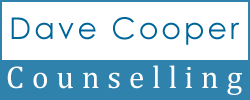
A2R Blog – The Recovery Box
Hi. Thanks for taking the time to read this. We are on a journey of change from an unhealthy pattern of ‘exits’ from our life to a healthier pattern of facing and processing difficulties. How do we do this exactly? Today I want to give you a method of how we can manage to keep learning, even in the face of difficulties and slips! By the time you have read this you will have a better grasp on how to continually keep moving forward in your recovery, enjoy!
Let’s start with a question. When you look at your experiences of attempting to achieve recovery, or anything else for that matter, do you see two choices, success or failure, right? Of course we know what we want and we know what it looks like when we get it, but what we are going to look at today is how our method of getting it is affected by this rather ‘black and white’ view. I am going to show you how the outcome is hugely affected by the approach. To do this I am going to introduce you to a very simple device, I call it the ‘recovery box’!
I work with addicts of all sorts and I always encourage them to see things this way. If we attempt to get ‘clean’ and apply the logical parameters of ‘success and failure’ then we get the usual results, which is that we feel successful as long as we are resisting the temptation and then feel utter failure when we succumb to that temptation. Of course feeling like a failure is what gets people into recovery counselling in the first place, so it’s not all bad! The idea of failure has some uses, but when it is applied in such a dramatic way it works against us. Let’s look at an example of this type of thinking.
When someone is looking at ‘quantity over quality’ this is a sign to me that they are too stuck on success and failure. Often I will hear that they are ‘seven weeks sober’ or ‘I’ve just thrown away three months sobriety’. Why is quantity such a good indicator? Because the stark facts of length of clean time are being used to define success, and this is way too narrow. Actually, it almost guarantees failure! So how does the ‘recovery box’ help us?
Let me show you how simple this is and then I will go on to explain how powerful it can be in your approach to recovery. Okay, I want you now to imagine a box, make it personal, just how you want it. It can be a steel strapped security crate, or it can be a battered old cardboard box, whatever is easiest for you to see in your mind’s eye. Now take a felt tip pen or some other imaginary writing method and write on the box one word, ‘recovery’. Again this can be a scruffy hand written word, or a machine printed neat design. Make it yours. Now the idea is very simple, all I want you to do is take whatever happened today and put it in the box!
I know, it seems all too simple, but stick with me here and give it a try. Of course I mean everything! Yes even drinking or drug use, even porn time, even losing a record amount of money through online gambling, everything! It’s a commitment to your recovery and from this perspective exposes your lack of commitment in the past. Now we just need to add some simple instructions.
The recovery box is where you learn, it is where you grow. When you put something in the recovery box you ask yourself a very important question, “What do I need to learn from this”? Or “what is this trying to teach me”? Without this question you cannot grow into maturity and sobriety. When you leave something outside the box you are effectively saying “this is not part of my recovery, it does not teach me anything (except that I am a failure)”.
Let me offer some more insight into why this works so well. Imagine your recovery like a ‘growth machine’, it produces things like well being, contentment and peace! How does it do this? It needs raw material to fuel it and keep it running. Often people use the encouragement and support of others as the raw material, great but this is sometimes in short supply. If your addiction has placed you in a position of isolation or shame is telling you that you cannot speak about your issues then your machine will have no fuel to run on.
The everyday experiences in your life will be the fuel on which your recovery machine will run! It is in endless and continual supply and it is free! Trust me when I say that your daily experiences hold everything you need to keep your machine running well and producing authentic recovery!
This is probably new to you and you are probably sceptical. Of course there is more to this and we need to also be improving our understanding and practice as part of our commitment but this is a very important part of our practice. Let me leave you with one last thought as an inspiration to begin this practice. Imagine how many things have gone wrong in your life. Now imagine if you could find a way to have every one of those things help you recover! So the tougher things get, the faster you grow! Talk about turning the tables! This is exactly what the ‘recovery box’ does.
Thanks again for taking the time today.

